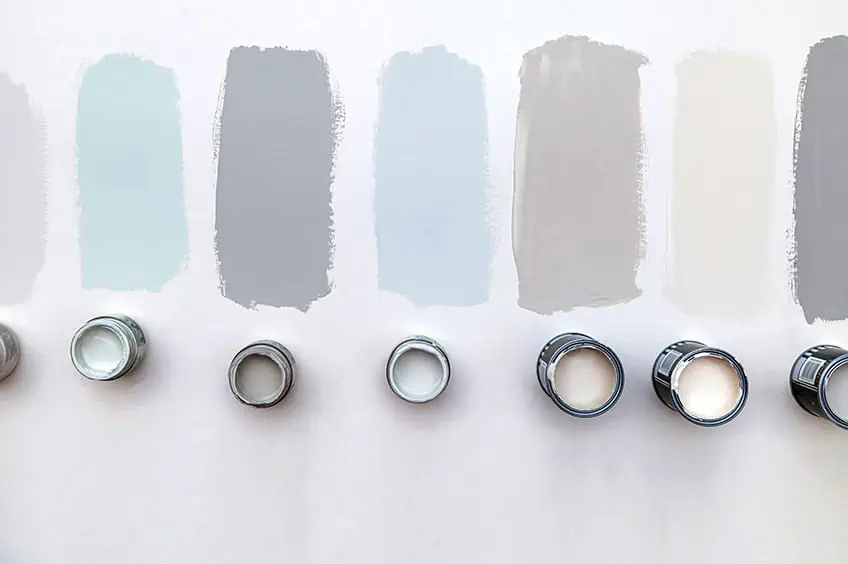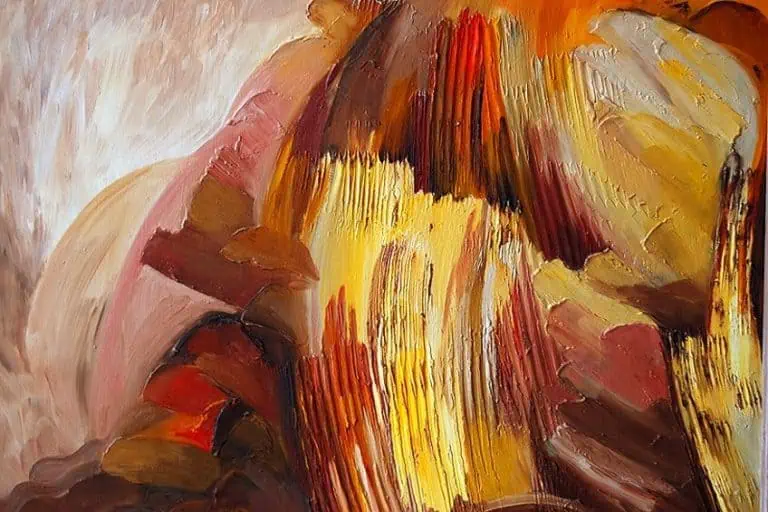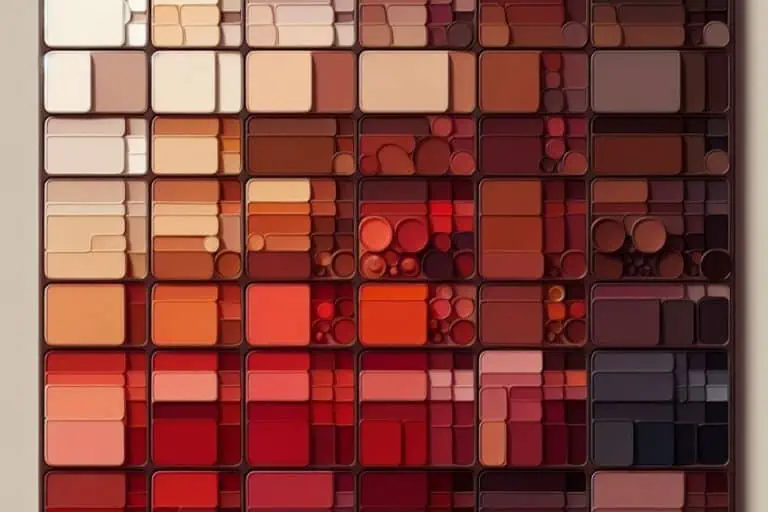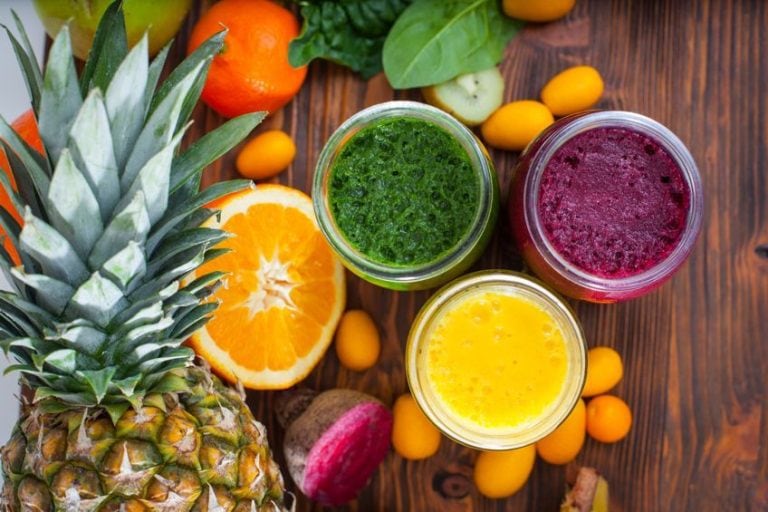What Colors Make Gray? How to Create Different Shades of Gray
This post may contain affiliate links. We may earn a small commission from purchases made through them, at no additional cost to you.
How to make gray? Gray is considered a neutral color or achromatic and can be created by combining various amounts of black and white. However, gray, and various shades of gray can also be created by using complementary or primary colors. Although it may not be a favorite color to many, it does have its uses. In painting, gray is not just a dull color, it can add tremendous depth by influencing shadows and contrasting darkness and light. You can also use gray to paint your walls, which could add an elegant and sophisticated look and a means to create contrast or draw attention when paired with other colors. Let us now go into more detail and discuss what colors make gray.
Table of Contents
History of Gray
In the past, many peasants and other poorer people used to wear undyed wool which is gray. Sticking with fashion, black, gray, and white became popular during the Renaissance and Baroque periods, specifically in Italy, Spain, and France. During this time, gray was also used in paintings. A painting technique named grisaille stands out in this case as it involves working with gray monochrome colors, mostly in intimate sculpture pieces. Gray was and is also used as a background color for skin tones, used to create highlights.
Later, during the eighteenth and nineteenth centuries, gray was particularly common in dresses and waistcoats. Eventually, the gray business suit made an appearance, utilizing both the lighter and darker gray shades according to the season. This also became popular later on in the twentieth century after the war. Unfortunately, during the nineteenth century, in factories, the color gray was usually the uniform color of choice. Gray is also a less visible color, and so became popular as military uniforms. Consider the confederate army during the civil war in America, which was gray. During the years, many artists like James McNeill Whistler created a gray background for the famous painting of Whistler’s Mother.

In general, gray is an unassuming color, not attracting attention and allowing other colors to stand out more. Today, many would say that gray is more sophisticated and classic in appearance. You can either create a more calming feeling with lighter grays, while darker gray can produce a feeling of strength. These colors and shades of gray are widely used in the design and décor industry to create the perfect atmosphere in a room.
Gray does not have to indicate doom and gloom in the dark and thunderous rain clouds, various shades of gray can produce feelings of comfort and peace. The color gray can also represent wisdom and other positive images. In conclusion, when painting with gray, even though some classify it as not being a color, it can help bring life and contrast to an image.
What Two Colors Make Gray?
Black and white are technically not colors as they are used to create shades and tints of various other colors. A basic neutral gray is the combination of equal amounts of black and white. The shade can be determined by the amount of black or white. For example, more white will create a lighter shade of gray and vice versa. Using this neutral gray, you can also influence the color temperature by adding a little bit of red to create a warmer hue and blue for a cooler shade.
Besides using black and white, you can also create gray by combining your complementary colors. These colors can be seen on opposing sides of what is known as a color wheel. For example, red and green, blue, and orange or yellow and purple. Whenever these colors are mixed, it will create a form of gray that will keep some of the qualities of both colors used. There is also the primary gray you can create by combining all three primary colors. You can adjust the form of gray by altering the amounts added.
When mixing colors, color bias plays an important role as many of the pigment-based mediums may not be true primary colors and lean towards a color bias. This can ultimately affect the outcome of your color and painting. To understand what a color bias is, look at a color wheel that has all primary, secondary, and tertiary colors. You will notice that red sits between the orange and purple tertiary colors. So, now you can create a color hue that leans towards your warmer orange or orange-red. On the other hand, you can create a cooler red hue if you lean towards purple, a red-purple. These color biases can also affect the outcome of your gray color. It might be a good idea to create a color palette to test out the colors to see what colors you can create.
The Best Gray Combination
Black and white colors combined do make a gray and are known as neutral gray. However, this does tend to make a dull and flat, basic gray. Sometimes, the simple addition of white and black can create a muddy and less appealing gray color. So, what colors make gray brighter and cleaner? Try adding orange and blue for a warm and cool hue.
But what happens if you add too much of one color, for example, blue. Simply add in colors that lean towards warmer or lighter colors. Add in identical, tiny amounts of white and orange to your blue-gray paint. The orange will make it brighter, while the white will lighten the color.
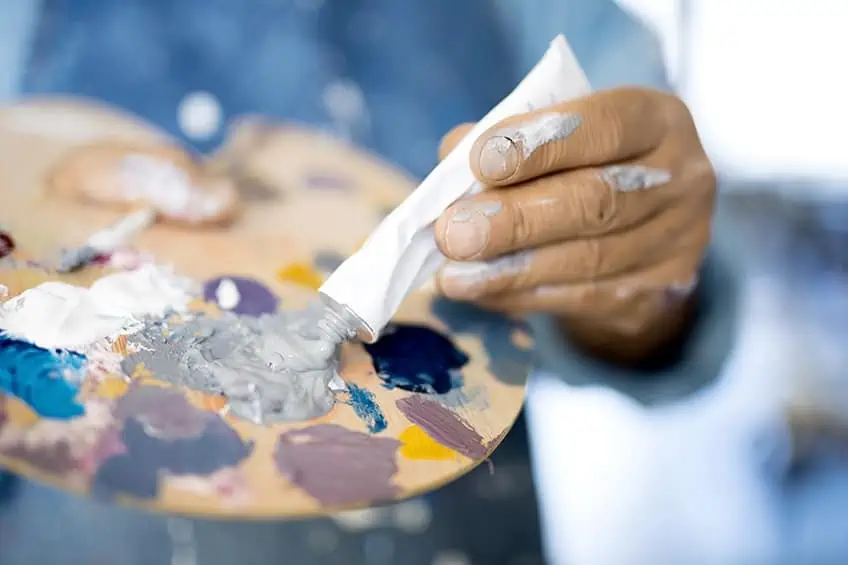
Scientific Hex Codes for the Color Gray
Above, we have looked at how to make gray, the foremost method being, creating gray from black and titanium white. While you can mix many shades using this method, you are restricted as to intensity and flexibility, when you only use black and white blends. Mixing colors is not only found on canvas but also on computers as well as other digital screens.
In this case, the amount of red, green, and blue (RGB) is used to determine the colors. When it comes to printing, the system uses a four-color process and is referred to as CMYK (cyan, magenta, yellow and black). The hex code or hexadecimal code is a shortened version of the RGB codes, which helps to identify colors for computer use. The code is made up of a hashtag followed by six letters and numbers, the initial two represent red, the next is green, and the final two are blue. There are millions of combinations and colors. Below are a few popular gray colors with their hex codes.
| Color Name | Shade of Gray | Hex Code | RGB | CMYK |
| Gray | #808080 | 128, 128, 128 | 0, 0, 0, 50 | |
| Dark Gray | #A9A9A9 | 169, 169, 169 | 0, 0, 0, 34 | |
| Cool Gray | #9090C0 | 144, 144, 192 | 25, 25, 0, 25 | |
| Charcoal | #36454F | 54, 69, 79 | 32, 13, 0, 69 | |
| Battleship Gray | #848482 | 132, 132, 130 | 0, 0, 2, 48 | |
| Ash Gray | #B2BEB5 | 178, 190, 181 | 6, 0, 5, 25 | |
| Gunmetal | #2A3439 | 42, 52, 57 | 6, 9, 0, 78 | |
| Light Gray | #D3D3D3 | 211, 211, 211 | 0, 0, 0, 17 | |
| Medium Gray | #BEBEBE | 190, 190, 190 | 0, 0, 0, 25 | |
| Silver | #C0C0C0 | 192, 192, 192 | 0, 0, 0, 25 | |
| Stone Gray | #928E85 | 146, 142, 133 | 0, 3, 9, 43 | |
| Storm cloud | #4F666A | 79, 102, 106 | 25, 4, 0, 58 |
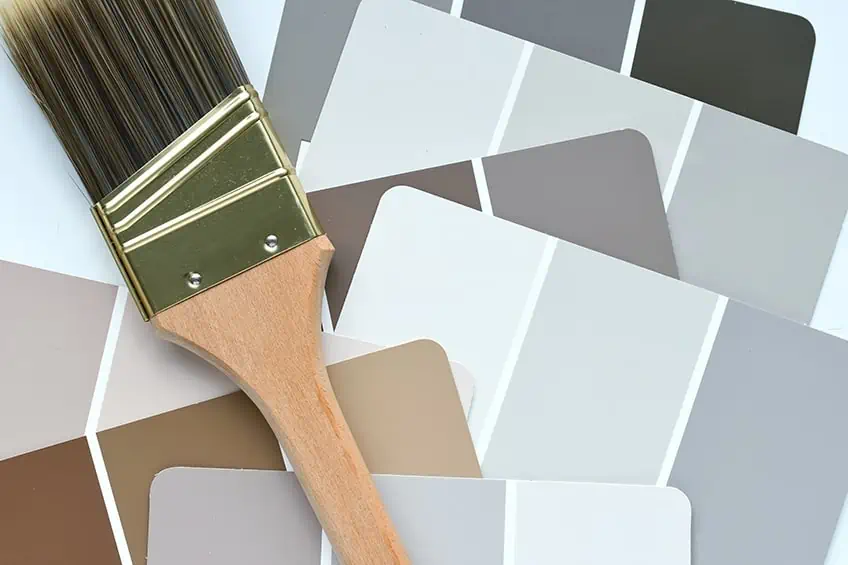
How to Make Gray With Acrylic Paints?
Gray is a neutral color, but it can add so much to a painting, bringing new dimensions with light, dark, and shadows. Black can easily obscure details, however, gray can represent darkness and nighttime scenes without covering up other details. We have already gone over the different ways you can create gray.
- Neutral (true) gray combining black and titanium white
- Complementary gray with complementary colors
- Primary gray with all three primary colors, for example, cadmium yellow and red, with ultramarine blue. Then slowly add white to create varying shades
You can also purchase gray paint, which you can then adjust by adding more white or black. Below are more examples of how to make gray paint. Using different types of colors will produce different grays that are either warmer, cooler, lighter, or darker. When trying to create different shades of gray, make sure to keep a record or palette of what you are doing so that you can repeat the process in the future.

- Blue with orange, this can be any combination of the different types of colors, for example, cobalt blue or ultramarine blue and cadmium orange
- Green and red to create gray and add a little white to create more shades of gray. For example, add cadmium red to phthalo green, and to this add small amounts of white
- Yellow and blue or purple with added white, for example, cadmium yellow and cobalt blue. You might have to adjust the ratios to get the gray you are looking for
- Ultramarine blue mixed with a burnt umber, then add white in different ratios
You can combine the various colors, excluding the white for the moment. Start with equal amounts of paint and place these onto your palette. Mix the colors thoroughly and you should get a form of gray paint from dark grayish purple to other hues, depending on what colors you chose. You can bring in some white to lighten the paint, or you can add a little black to darken. This affects the shade of gray while adding more of another color will affect the hue. When adding paint, always work with small amounts each time. If you created a gray with complementary or primary colors, you could change the hue by adding more of the colors you originally used. When working with a neutral gray, creating various tints can be done by using almost any color.
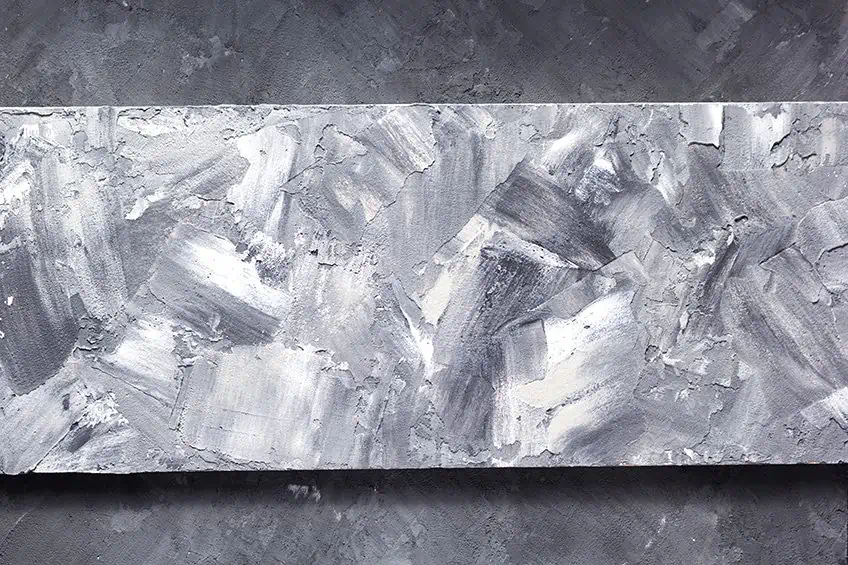
How to Create Gray Watercolors?
The most simple way of creating gray watercolor is to dilute black. This can be effective but might be slightly dull for some. Hand-mixed gray will create more varied options that are closer to what is in nature and will provide more depth to a painting. You can use gray paints straight from the tube; however, you never know what is inside, which can affect the outcome. One common example is Payne’s gray.
When creating your own colors, it is best to test out the colors and wait for them to dry. The true color will only show once the watercolor paint has fully dried. Gray can come in many shades from light to dark and have various undertones including red, green, and blue. When looking at shadows or the sky, it is really a mixture of colors and cannot be represented on paper simply using black and white. The easiest and most adaptable method is to combine blue, red, and yellow, and these can create several different neutral grays. The color can be adjusted by using any one of these three colors. Maybe these mixtures do not look gray enough to you? However, play around with these colors in various combinations. When it comes to a realist representation, plain neutral gray is not the only option.
You can also use two colors to obtain a gray, as we have discussed earlier in the article. The same applies to watercolors. So, instead of simply using gray from a tube, why not experiment with your own custom mixes to create more unique and amazing art pieces. Not only can gray provide depth and dimension, but it can also be used to intensify surrounding colors and can help to improve clarity. Below are a few two-color examples you can experiment with.
- Raw umber and cerulean blue
- Ultramarine and raw sienna
- Cerulean blue and raw sienna
- Cobalt blue and burnt sienna
- Cadmium red and pthalo blue
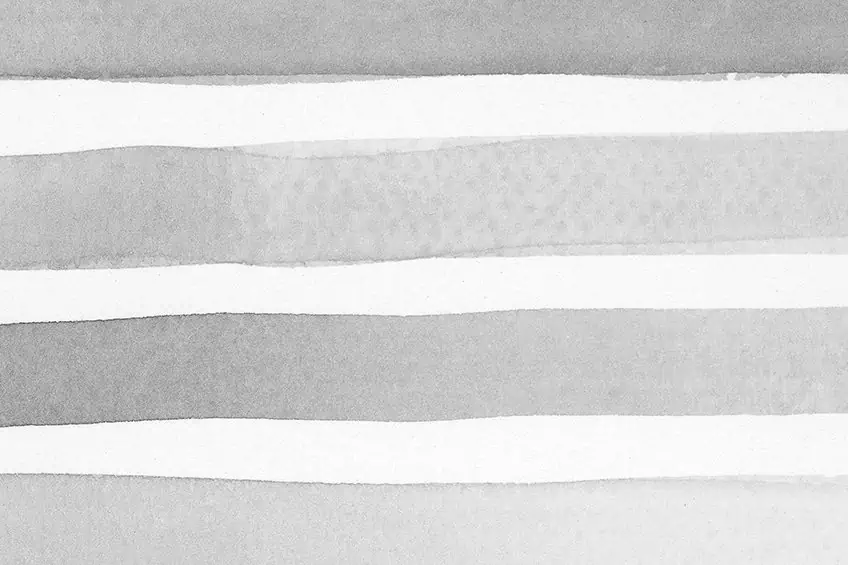
Gray Colors and Decor
Maybe you are thinking of painting your walls a new color in your home. Choosing a color can be challenging as you do not want to buy a color that lands up being all wrong, costing you a lot of money. Gray can be a good choice, as it is a neutral color and provides a sophisticated look you can either add color to or leave for a clean and relaxed look.
You can incorporate gray into a room by painting walls, furniture, or adding accessories. Lighter gray shades give off a more feminine feel, while darker shades offer a more masculine impression. You can easily create a calming and relaxed atmosphere in a bedroom by using lighter gray shades and whites. Bring in a few earth tones like green or browns to add more character.
Dark grayish purple or another dark gray color scheme can bring in a more contemporary feel. You can add other colors to bring attention to certain areas. Consider using gold accents to create a sophisticated look. Gray can also work with more vibrant colors. You can use the gray to tone down the vibrant colors and create a more balanced effect.
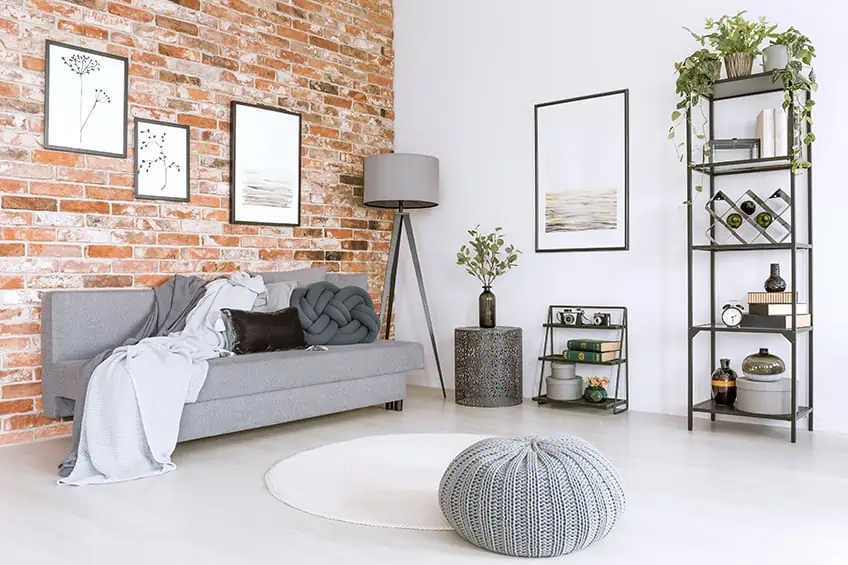
You can bring gray into the kitchen to create a stylish look. When bringing in gray, contrast does play an important part in balancing the whole look. A kitchen can have various types of gray incorporated from countertops to stainless steel appliances. The cabinets can also bring in a gray tone with copper or brass knob accents. Gray can also be a feature in bathrooms, beautiful cool gray cabinets with brass fixtures. You can also bring in blues or greens to add more color.
The best way to choose gray colors is to understand the underlying tones. Warmer shades of gray will go better with warmer colors, while cool grays go better with navy blue, cool greens, and whites. If you can recognize the color temperature or tone, it will make it easier to choose the rest of your color palette for a room. Charcoal gray is a good choice if you are looking for a darker color, it is not as intense as black or a dark blue. Gray can also be the perfect backdrop for adding a variety of patterns, textures, and accents, do not be afraid to experiment to find the look you are going for.
View our How To Make Gray web story here.
Frequently Asked Questions
How to Make Gray Paint?
The most basic method is to simply mix black and white to get a neutral gray color. However, you can also use complementary colors and all the primary colors to create gray. Adding white will then give you different gray shades.
Is It Possible to Mix Gray Without White?
You can mix complementary and primary colors to create gray. For example, red and green, purple and yellow, or orange and blue. However, to lighten these colors, you will need to add white. If you use red, green, and yellow, you can also lighten the gray color using a lighter hue of yellow.
What Is the Easiest Method for Mixing Gray Acrylic Paint?
You can use gray paint from the tube or combine white and black paint. Many artists prefer to create gray using primary colors and then slowly adding white to make various shades of gray. This provides more of a variety in hues and tones.
Is Gray a Cool or Warm Color?
A simple combination of black and white is a neutral color, however, when using complementary or primary colors, you can affect the color bias. Cooler grays lean more towards blue undertones, while warmer grays lean towards orange and yellow or red undertones. So, a cool gray can be a blend of white, black, and some blue. The specific hex code for cool gray is #8C92AC.
Duncan graduated with a diploma in Film and TV production from CityVarsity in 2018, after which he continued pursuing film while taking on a keen interest in writing along the way. Since having graduated, he began working as a freelance videographer, filming a variety of music videos, fashion and short films, adverts, weddings and more. Throughout this, he’s won a number of awards from various film festivals that are both locally and internationally recognized. However, Duncan still enjoys writing articles in between his filming ventures, appreciating the peace and clarity that comes with it.
His articles focus primarily around helping up-and-coming artists explore the basics of certain colors, how these colors can be paired with other shades, as well as what colors are created when you mix one with another. All while relating these shades to historically significant paintings that have incorporated them into their color palette. As a lover of the arts himself, he takes great interest in the Renaissance era of paintings, an era that has directly inspired many of his favorite films.
Learn more about Duncan van der Merwe and about us.
